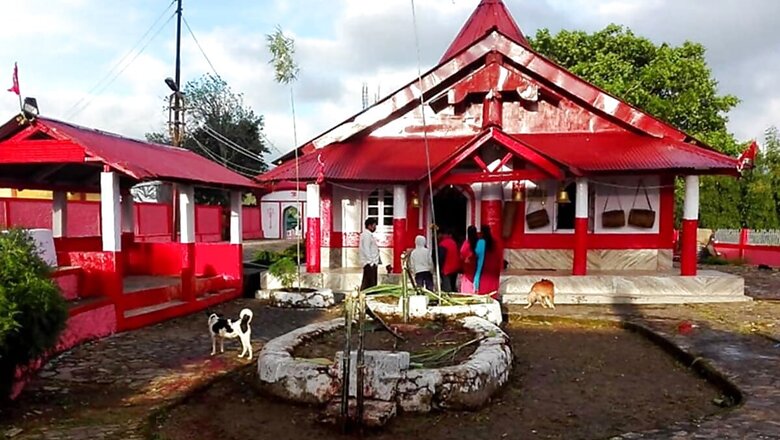
views
It rained cats and dogs in Jowai during the last four days of Durga Puja. The incessant downpour somewhat dampened the puja spirits in one of the most revered shaktipeeths of the country, where the festival is celebrated by Hindu tribals of Meghalaya.
“This year, due to the pandemic, the district administration of West Jaintia Hills and the locals restricted the visit to the holy shrine. Only the locals, in maximum number of 50 to 60 could visit the temple. We had downsized every ritual related to the puja to the bare minimal,” said Omi Deshmukh, priest at the Nartiang Durga Temple.
Omi Deshmukh’s forefathers were invited to Nartiang from Maharashtra in the late 14th century by the then king of Nartiang to preside over as priests of the mandir that’s dedicated to their deity Jayanteswari.
Tucked in the pristine backdrop of the lush green mountains and cradled by the serene silence, the Nartiang Durga Temple is around six centuries old and is the abode of Nartiang Devi worshiped as Jayanti or Jayanteshwari.
Jayanteswari was the revered deity of the erstwhile Jaintia Kingdom and a central figure in the Niamtre faith. The Pnars of Jaintia Hills believe that Niamtre was a God-given religion that rested on the principles of honest livelihood), compassion towards fellow humans and brotherhood and respect of members of parent’s clans. Worshipping a Mother Goddess is central to the Niamtre faith and this assimilated into the Shakti worship of Sanatan Dharma.
Since the practitioners of the ancient Niamtre faith did not worship any murtis (idols), the tradition continues. During Durga Puja the trunk of a banana tree is worshipped as Ma Durga.
Unlike the rites observed in the plain, those at the hill temple are a unique confluence of Hindu and ancient Khasi traditions. In earlier years, human sacrifice was said to be a prevalent practice in the sacred temple painted in red. Human sacrifice has now been replaced with animal sacrifice as goats and ducks are sacrificed on Ashtami and Nabami (eight and ninth day of Durga Puja).
As a customary religious practice, a special sacrifice of a goat dressed like a human in a dhoti with a turban on its head and with a human face mask is sacrificed in the sole presence of the priest.
“This year, one goat was sacrificed. Usually people bring goat in large numbers for the sacrifice. Sacrifice of gourds is also prevalent here. Normally one would find gourds nicely placed around the sacrifice altar during the Ashtami. This time it’s sans the gourds. Thing are to be this way, it’s possibly the Devi’s wish” says Deshmukh.
Durga is worshiped in the form a plantain tree in the temple where one doesn’t find the usual clay idols. The plantain plant is draped in a saree and adorned with ornaments. For the next four days the plantain is worshiped as the form of the goddess of power. This is primarily due to the assimilation of the Niamtre faith with Sanatan.
At the end of the four-day festivities, the plant is ceremoniously immersed in the Myntdu River.
The Nartiang Durga Mandir is one of the three shaktipeeths in northeast India, the other two being the Kamakhya temple in Guwahati and the Tripura Sundari Mandir in Tripura.
“It’s primarily the Durga puja, the Manasha Puja and Holi that is celebrated in Nartyang with religious fervour,” added Deshmukh.
It needs mention that it was from the Nartyang Durga Mandir that soil was taken for the Bhoomi Pujan of Ram Mandir performed by Prime Minister Narendra Modi.
The waters of the Myntdu and Myntang rivers that are revered by the locals were collected to be carried all the way to Ayodhya for the bhoomi pujan.
Read all the Latest News and Breaking News here


















Comments
0 comment